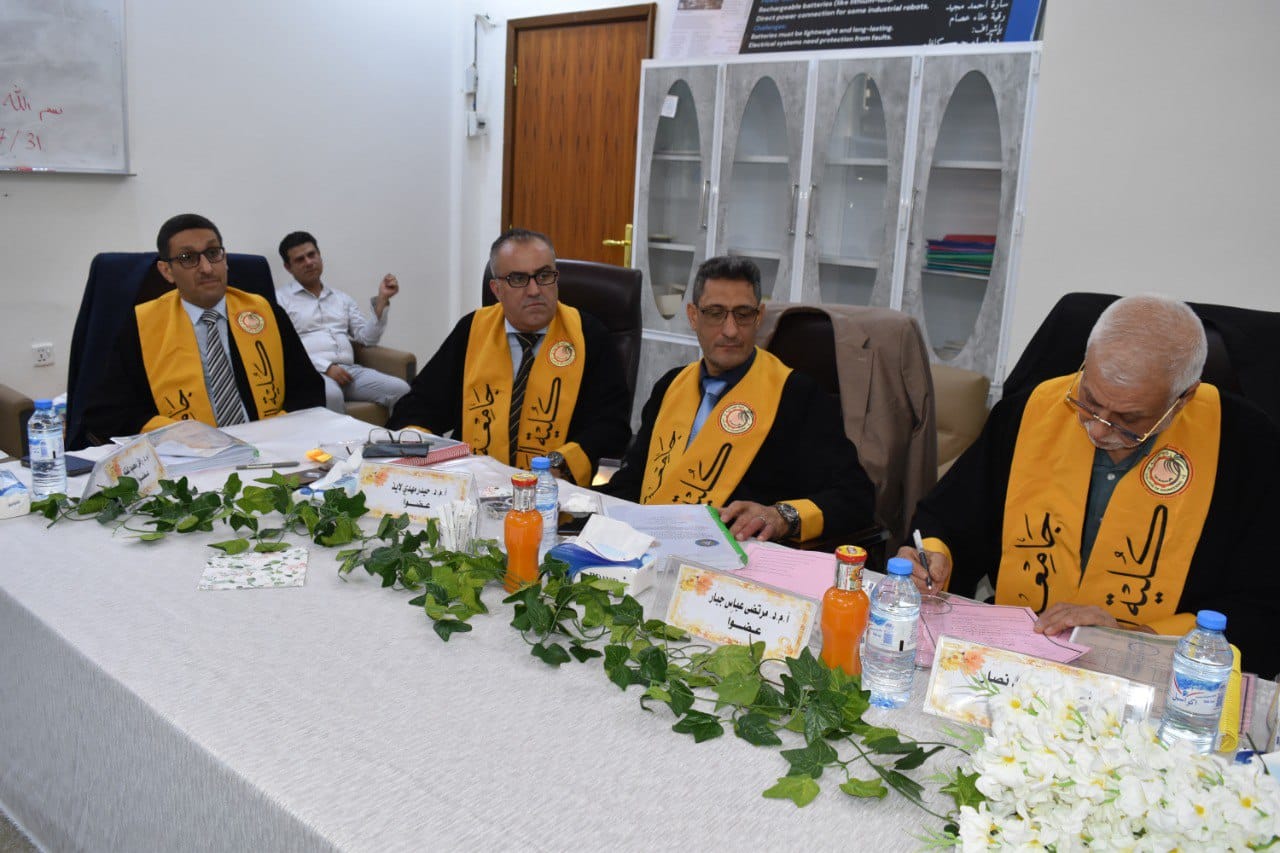
The doctoral thesis of researcher Mohamed Jamil Zidan was discussed at the College of Engineering, University of Basra, titled Experimental and Theoretical Study of Deep Drawing Thermoforming Process of Carbon Fiber-Reinforced High-Density Polyethylene
Abstract
This PhD thesis presents an experimental and theoretical study of the deep-drawn thermoforming process of carbon fiber-reinforced high-density polyethylene (CFs-HDPE) composite sheets. Given the growing industrial demand for lightweight, high-performance, and high-strength composite materials, which are commonly applied in transportation, aircraft, drones, consumer products, and other fields, a methodology combining experimental work and numerical simulation using ABAQUS/CAE software was used to study the forming process of CFs-HDPE composite sheets under various process variables, namely temperature, forming depth, and punching speed.
For the experimental work, sheet manufacturing molds were designed, after which CFs-HDPE sheets were produced. After manufacturing, the sheets were cut into 100 mm squares. The forming mold was designed and consists of three main parts: the die, the blank holder, and the punch. The cut square sheets were formed using a die according to the forming process parameters: forming temperatures of 70, 80, and 90°C; punch speeds of 0.25, 0.5, and 0.75 mm/s; and forming depths of 10, 20, and 30 mm. The following defects were observed during the forming process: tearing, wrinkling, thickness variations, and melting. Through simulation, stress and strain types, contact opening (COPEN), contact pressure (CPRESS), external work energy (ALLWK), and AC yield distribution were studied, as well as the effect of temperature and forming depth on the forming force. A CAX4R mesh element, a four-node, axially symmetric bilinear tetrahedron, was constructed. The results showed that increasing the temperature decreased the forming force, while increasing the forming depth increased the forming force. The optimum process parameters were found to be a temperature between 80 and 90°C, a punch speed of 0.25 mm/s, and a forming depth of 10 mm. At these parameters, the experimental forming forces were between 1600 and 1700 N.
Through verification of the simulation, the average thickness prediction error between the experimental and simulated results was found to be less than 3%. The results of this study apply to carbon fiber-reinforced polyethylene (CFs-HDPE) with a volume fraction of 90% HDPE and 10% CFs only. This doctoral thesis can be considered a reliable reference for future research, building on the results derived from it





